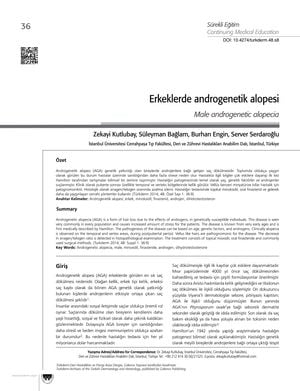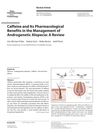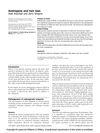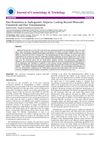Male Androgenetic Alopecia
March 2014
in “
Turkderm
”

TLDR Hair loss in men can be slowed or reversed with treatments like minoxidil and finasteride, but it resumes if treatment stops. It may also indicate early heart disease and obesity.
The 2014 study "Male androgenetic alopecia" discussed Androgenetic Alopecia (AGA), a common form of hair loss linked to age, genetic factors, and androgens. The disease was observed in the temporal and vertex areas postpuberty, with a decrease in the anagen/telogen ratio. Treatments included topical minoxidil, oral finasteride, and surgical methods. The study found that 15% of male participants experienced new hair growth with minoxidil, 50% had delayed hair loss, and 35% continued to lose hair. A 5% minoxidil solution was more effective than a 2% solution. However, hair loss resumed once treatment stopped. Daily use of 1 mg finasterid resulted in hair increase in 48% of participants by the end of the first year and 66% by the end of the second year. The study also noted that AGA could be an indicator of early-onset coronary diseases, hyperinsulinemia, insulin resistance, and obesity. Future treatments under research included second-generation steroidal 5-alpha inhibitors. The number of participants was not specified.




